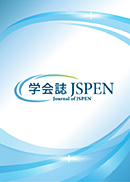Volume 3, Issue 4
Displaying 1-9 of 9 articles from this issue
- |<
- <
- 1
- >
- >|
-
2021Volume 3Issue 4 Pages 209
Published: 2021
Released on J-STAGE: March 30, 2022
Download PDF (513K)
-
2021Volume 3Issue 4 Pages 210-217
Published: 2021
Released on J-STAGE: March 30, 2022
Download PDF (860K) -
2021Volume 3Issue 4 Pages 218-227
Published: 2021
Released on J-STAGE: March 30, 2022
Download PDF (1540K) -
2021Volume 3Issue 4 Pages 228-237
Published: 2021
Released on J-STAGE: March 30, 2022
Download PDF (950K) -
2021Volume 3Issue 4 Pages 238-248
Published: 2021
Released on J-STAGE: March 30, 2022
Download PDF (1235K)
-
2021Volume 3Issue 4 Pages 249-253
Published: 2021
Released on J-STAGE: March 30, 2022
Download PDF (789K)
-
2021Volume 3Issue 4 Pages 254-259
Published: 2021
Released on J-STAGE: March 30, 2022
Download PDF (2435K) -
2021Volume 3Issue 4 Pages 260-268
Published: 2021
Released on J-STAGE: March 30, 2022
Download PDF (1646K)
-
2021Volume 3Issue 4 Pages 269
Published: 2021
Released on J-STAGE: March 30, 2022
Download PDF (543K)
- |<
- <
- 1
- >
- >|
